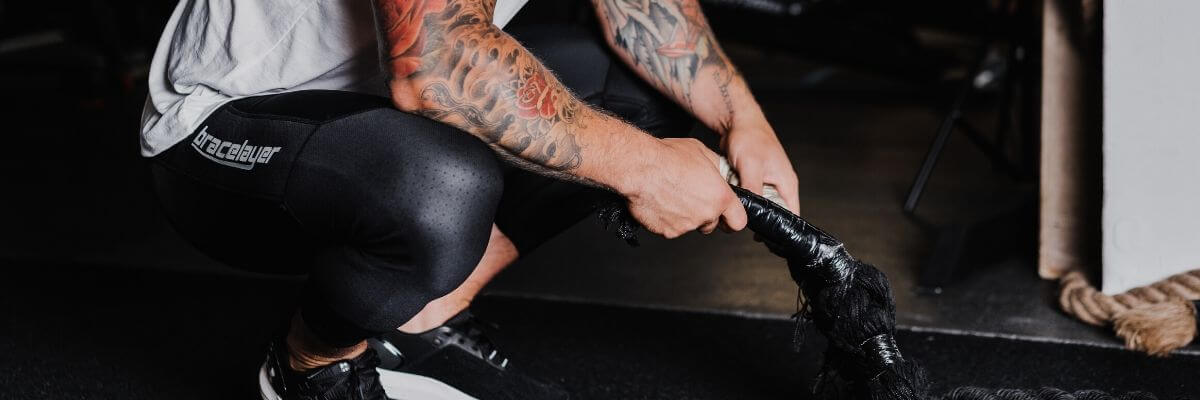IT Band Syndrome – What’s the Best Way to Get Back to Running?


IT Band Syndrome Causes & Treatment – What’s the Best Way to Get Back to Running with ITB Syndrome?
Are you suffering from an indescribable pain on the outside of your knee? Can you not pinpoint when you may have hurt it, but notice that it gets worse over time? Does running or even walking make it even worse?
You may be suffering from ITBS. Fortunately, there are simple ways to treat and prevent it, getting you back to your favorite activities in no time.
What is ITBS?
Cyclists, runners, and even long-distance walkers/hikers often experience pain in the outer part of the knee, which is often illiotibial band syndrome (ITBS). The ITBS band is made up of fibers that run down your entire leg, starting at your hip and going down to your shinbone. When the band gets tight, you may experience pain and swelling that can sideline you from your favorite activities.
Because the IT band stabilizes the knee, when it doesn’t work right it’s hard to move the knee with any force or speed. Running, biking, and sometimes even walking becomes difficult depending on the severity of the issue.

What are the Causes of ITBS?
The most common cause of IT band syndrome is overuse, but other causes include:
- Wearing shoes that don’t support your feet properly
- Running too frequently
- Not stretching properly before a workout
- Over-exercising
- Running only on one side of the road (the embankment causes your hips to go out of alignment)
- Walking or running with your feet pointed in
- Weak core muscles
What are the Symptoms of ITBS?
Most people will notice the knee pain first. It occurs on the outside of the knee, just above the joint itself. The pain may be minimal to start and even go away after you warm-up or start exercising. As it worsens, though, the pain becomes more intense and doesn’t go away, but worsens as you exercise.
Some people also have a clicking or popping in the knees, or pain that goes above and below the knee, running the course of the entire leg from the thigh to the shinbone.

How is ITBS Diagnosed?
You may be able to diagnose ITBS yourself based on your symptoms, but you should also seek medical attention. Your doctor will ask about your medical history and the symptoms you experience. Jot down notes about your experiences so you tell the doctor all the symptoms. Upon a physical exam, the doctor should be able to diagnose it with no further testing. If your doctor is concerned about other issues, though, he may order an X-ray to rule out other issues.
What are the Treatments of ITBS?
Fortunately, treatment is minimally invasive for ITBS. Unfortunately, it does involve a lot of rest. You’ll likely need to stop running, biking, or even hiking for the time being. The longer you rest and elevate your knee, the quicker it will heal. Doing too much for too long could sideline you forever.
While you sit out your regular workouts, swimming and rowing can be great exercises to keep up your strength without putting pressure on your knee joint, but only do this with your doctor’s approval.
Other ways to treat ITBS include:
- Icing your knee for 10 – 15-minute intervals, especially at the start of the pain
- Elevating your leg as often as possible
- Taking over-the-counter ibuprofen
If the pain doesn’t subside, physical therapy may be necessary. A physical therapist can help you choose exercises that strengthen your leg muscles and stretch the IT band. He/she may also help you alter your workout schedule or even help you choose different footwear that better supports your knee.
You’ll learn exercises that take the pressure off the knee as well as how to properly warm-up and cool down to best protect the joint.
Wearing Compression Pants for ITBS
Once you get the ‘go-ahead’ from your doctor to work out again, it’s natural to feel nervous. What if the pain comes back? What if you hurt your knee again?
Wearing knee support running is one great way to prevent injury. Compression pants provide your knee with the support and stability it needs while suffering from ITBS. Bracelayer's compression pants have an anti-bacterial Stabiluxe™ base and built-in knee compression sleeve that keeps your knee stable and relieve the pain. The stabilizing neoprene layer extends up the IT Band and around the hips. Our lightweight pants are breathable but still provide the support your knees and hips need to remain stable.
How do I prevent ITBS?
Once you treat ITBS, the last thing you want is for it to come back. So, how do you prevent it? Here are a few simple tips:
- Wear knee support running, while you do any type of workout, or even just walk, especially long distance
- Make sure you properly warm-up before working out
- Make sure you properly cool down after every workout
- Purchase supportive footwear that keeps your hips aligned and your knees forward, rather than pointing inward
- Use a foam roller or spikey massage ball after each workout, especially on your ITBS band, glutes and legs.

The Bottom Line
Don’t ignore what your body is trying to tell you. If you feel a nagging pain in your knee joint, especially on the outside, take a break. It’s your body’s way of telling you something’s not right. If you’ve damaged the IT band, it needs rest, elevation, and compression, all of which are easy to do and provide you with the relief you need.
When you properly support your knees with the right shoes, proper warming up and cooling down, and quality compression pants, you reduce the risk of injury and help get yourself back to your favorite activities in no time after suffering from IT band syndrome. The key is to listen to your body and do what it needs, even if that means sitting it out for a bit – running with ITBS is just not an option, at least immediately after injury.














































































































Leave a comment